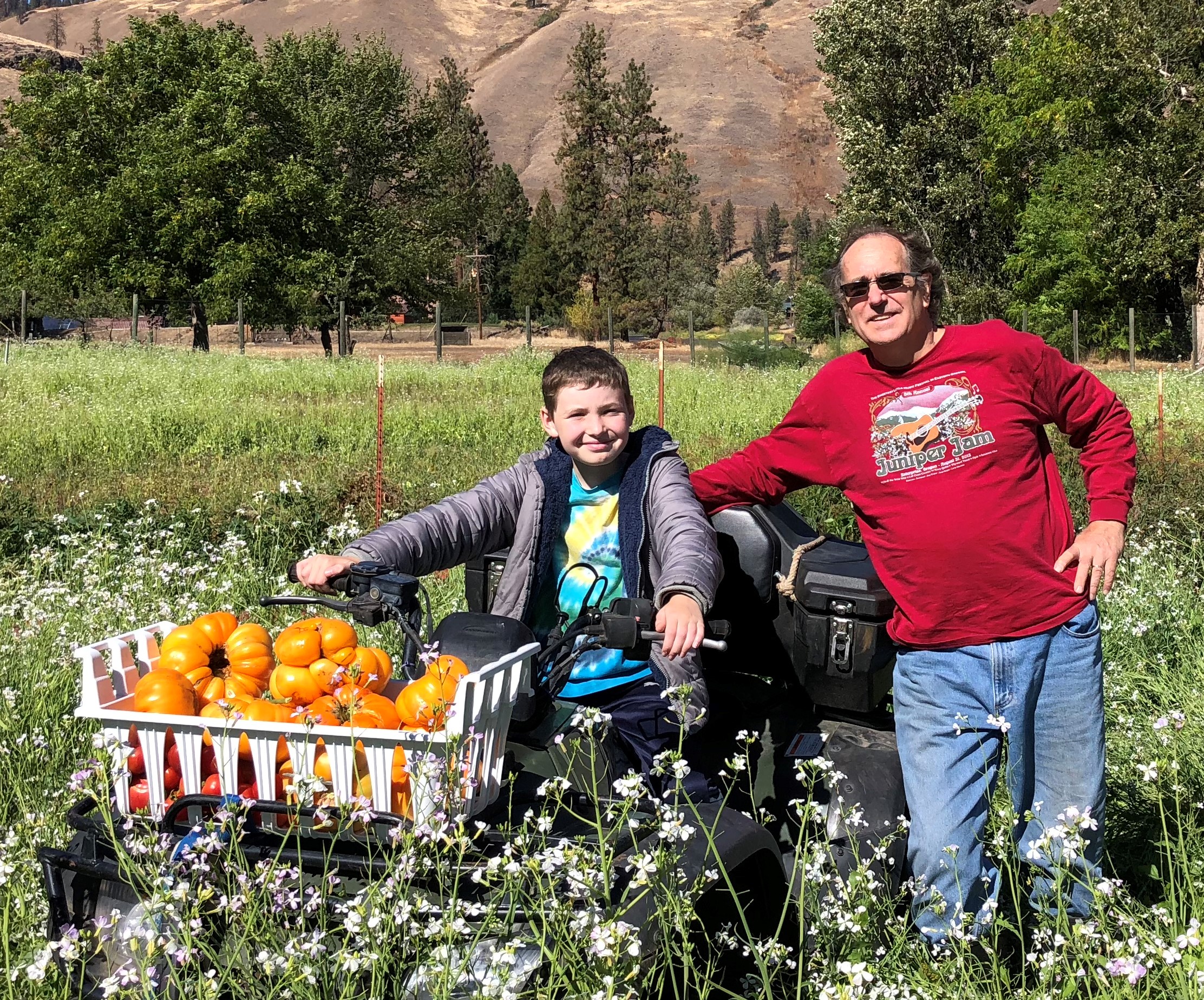
 HHRA Paper Analyzes Pesticide Dietary Risk in Individual Samples of Foods
HHRA Paper Analyzes Pesticide Dietary Risk in Individual Samples of Foods
One of the main sources of pesticide exposure is through the diet. It is critically important to understand pesticide residues in foods and how dietary risks have changed over time. Over the last 20 years HHRA’s Executive Director Charles Benbrook has developed an analytical database that quantifies the relative risk posed by residues in the diet. Known as the Dietary Risk Index (DRI), this system was created to help researchers compare risk levels across foods and pesticides, track changes in dietary risk over time, and assess the impact of where food is grown on residues and risk levels, as well as how production systems influence residues and risks (conventional versus organic). The DRI combines the results of United States and United Kingdom pesticide residue testing programs with data on food serving sizes and each pesticide’s chronic Reference Dose or Acceptable Daily Intake. Chronic DRI values are a ratio: the amount of residue in a serving of food relative to the maximum amount allowed by regulators. DRI values are a ratio: the amount of residue in a serving of food relative to the maximum amount allowed by regulators. Data generated by the DRI helps guide HHRA’s policy and public health by highlighting which food-pesticide combinations account for the most worrisome risks in the food supply. The DRI system initially reported aggregate values for a given food/pesticide combination. These values are derived from multiple individual samples of a food collected by regulatory agencies. For these DRI values, each individual number represents many servings of a given food. In 2022, HHRA added additional functionality the the DRI to report dietary risk in individual samples of a given food. The paper “Tracking pesticide residues and risk levels in individual samples—insights and applications,” which was published in the peer-reviewed journal Environmental Sciences Europe in July 2022, describes the methodology and data sources used to calculate these individual sample DRI values, and highlights some of the results and what they can tell us about residue levels in the global food supply. This is the first analytical system worldwide to provide this level of insight into residues in food. As the paper reports, “dietary risk levels are highly skewed. A large number of samples pose moderate, low, or very-low risks, and relatively few samples pose high or very-high risks.” Thus, regulators and researchers can use the DRI to pinpoint where pesticide dietary risks needs to be mitigated. Like all of HHRA’s peer-reviewed publications, this paper is open access and available free of charge. Click here to view the full text. Access DRI data here.
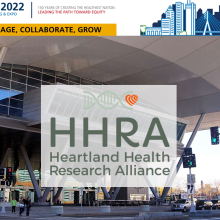 Worrisome Trends in Herbicide Exposures Highlighted During HHRA Sponsored Session at APHA
Worrisome Trends in Herbicide Exposures Highlighted During HHRA Sponsored Session at APHA
On November 8th, HHRA-sponsored a 90-minute special session on “Herbicides and Birth Outcomes” at the annual meeting of the American Public Health Association (APHA) in Boston. Our session was among a very few exploring how food and farming systems impact public health. Four speakers, all of whom are HHRA science advisors, will described ongoing efforts to deepen understanding of whether the rising use of glyphosate, glufosinate, 2,4-D, and dicamba herbicides are causing or contributing to more frequent and/or more severe reproductive problems, adverse birth and developmental outcomes, or possibly other health problems. Check out the presentations from the session here. Dr. Cynthia Curl shared recent insights gained in a birth cohort study she leads at Boise State University. Glyphosate-based herbicides are among the pesticides her project is focused on. Daniele Mandrioli traveled to Boston from Belogna, Italy and the Ramazzini Institute to describe the Global Glyphosate Study (GGS) and share early findings. HHRA is among the funders of the GGS and benefits from scientific collaboration with the Ramazzini Institute at many levels. Marlaina Freisthler presented the findings of her paper in Environmental Health. The analysis draws on urine data generated by the Centers for Disease Control, coupled with 2,4-D herbicide use data from the USDA. The paper concludes that rising use of 2,4-D has brought about more frequent detections of 2,4-D in people’s urine. Phil Landrigan discussed why he and other scientists started The Heartland Study and the challenges that lie ahead in sorting out which herbicides, if any, are contributing to adverse birth and developmental outcomes. He also shared worrisome findings on trends in the levels of some herbicides in the urine of pregnant women in the Heartland. HHRA Biomonitoring Data Accurate estimates of exposure are essential ingredients in birth-cohort and other epidemiological studies. The most practical and affordable way to estimate exposures in a large birth cohort study like our Heartland Study is measuring levels of pesticide analytes in the urine of pregnant women (“analytes” include parent compounds and the metabolites that herbicides break down into). HHRA’s research goals include generating and compiling the data needed to quantify how herbicide exposure levels have changed since the early 1990s, before the commercial release of GMO herbicide-tolerant crop varieties. Such data are badly needed in light of the major changes occurring in herbicide-use patterns across the Midwest, changes brought about by the ongoing spread of dozens of herbicide-resistant weeds. To fill data gaps, HHRA has been testing urine samples from pregnant women in the Midwest using analytical methods capable of detecting 17 pesticide analytes. These include glyphosate and glufosinate, and dicamba and 2,4-D, four of the herbicides that corn, soybean, and cotton farmers have become far more reliant on in recent years. We now have glyphosate and glufosinate results from our analytical lab, the Centre de Toxicologie du Québec (CTQ) in Canada for around 700 hundred samples spanning 2010 through mid-2022. HHRA also has data from CTQ for another 13 pesticide analytes from about 150 samples collected from 2010 through spring 2022. These results include the levels of 2,4-D and dicamba in the urine of pregnant women. Use of dicamba and 2,4-D has been rising dramatically in the last decade. Further increases are likely because both herbicides are marketed in association with genetically engineered, herbicide-tolerant seeds. Rising reliance on dicamba and 2,4-D is worrisome because both are classified as “possible” human carcinogens by the International Agency for Research on Cancer, and multiple studies have reported heightened risk of reproductive problems and adverse birth outcomes among pregnant women exposed to relatively high levels of these herbicides. HHRA’s new biomonitoring data point to four preliminary findings. The average level of dicamba in the urine of pregnant women has increased over 3-fold just since widespread planting of dicamba-tolerant seeds began in 2017. Recent increases in farmer reliance on glufosinate (Liberty-brand herbicide) is now leading to possibly significant exposures to glufosinate and its primary metabolite 3-MPPA (3-MethylPhosphonicoPropionic Acid). Some good news — the levels of 8 out of 10 synthetic pyrethroid and organophosphate insecticide analytes have fallen over the last decade or so, including about a 50% decline in the primary metabolite of the organophosphate insecticide chlorpyrifos. Based on HHRA’s data spanning 17 pesticide analytes, the average person in the Midwest over the last two decades has been exposed on most days to at least 7 pesticide analytes. HHRA is highlighting the new data on dicamba and glufosinate because, to our knowledge, these are the first, significant datasets collected worldwide on levels of these herbicides in human urine. Such data are essential for regulators, farmers, and the pesticide industry to accurately quantify pesticide risks and when determining whether steps are warranted to reduce exposures. Why HHRA is Focusing on Pesticides and Birth Outcomes Food and beverages are the most common source of pesticide exposures for the general public. The highest levels of exposure are experienced by people who handle or apply pesticides, or live or work near where pesticides are frequently applied. If HHRA had the funding needed to test our urine samples for all, or even most widely used pesticides, the data would likely show that most people are exposed to 10 or more pesticides on a near-daily basis. We know that herbicide use and exposures are rising steadily, but very little research has been carried out since the 1990s to track possible impacts on reproductive health and birth outcomes. This is why we started the Heartland Study. As of early November, we have enrolled 340 pregnant women in The Heartland Study (HS). About one-half have given birth, marking the end of Phase 1 in the HS protocol for these women and infants. By the end of 2024 or early 2025, we hope to have enough mother-infant pairs through Phase 1 to begin publishing clinical findings. But now, HHRA is able to share important new data and insights on changes in herbicide exposure levels. It is likely that most herbicide-induced adverse birth and developmental outcomes, and other health problems, will rise or […]
 An Update from HHRA
An Update from HHRA
HHRA’s team has been making lots of progress in our important work at the intersection of food, farming, and health. We started the spring/summer of with a bang as we brought HHRA on the road to the Public Health Conference of Iowa in May. At the same time, farmers across the Heartland were preparing fields for planting and carrying out early weed management practices. The end of spring into the early summer months (March-July) is the peak herbicide spray window in the Midwest, which in turn means sometimes higher exposures for families in the Heartland living near corn and soybean fields. Capturing data from our flagship project The Heartland Study during this window is essential to better understand how pregnant women in the Heartland may be impacted by herbicide exposures. Heartland Study Progress We have been successfully enrolling 15 or more pregnant participants each month into The Heartland Study for the past several months, with almost 300 Mother-Infant Pairs enrolled so far. Our newest study site at Gundersen Medical Center in La Crosse, Wisconsin should begin enrolling pregnant women in September. Welcome to the team, Gundersen! We recently sent the first batch of Heartland Study urine samples to be evaluated by the Center for Toxicological Research (CTQ) in Quebec, Canada, our analytical partner for herbicide exposure assessments. To our knowledge, no one has run any urine sample tests with a method capable of quantifying low-levels of dicamba. A first batch of Heartland Study urine samples have been sent to our analytical lab, CTQ in Quebec, Canada. At HHRA’s request, the great team at CTQ has developed a new method that detects dicamba, 2,4-D and 11 other pesticide analytes in urine. Our Heartland Study will include the first large-scale study of dicamba in human urine conducted anywhere in the world. Previously there was no practical, vetted method for quantifying dicamba in urine, which is why there are no data on dicamba in urine accessible to regulators or public-health scientists. This is a consequential data gap given that the use of dicamba has risen more rapidly in the last five years than any other herbicide. “The new dicamba method may be one of the most significant enhancements in herbicide analytical chemistry methods in decades,” says HHRA Executive Director Charles Benbrook. Looking Ahead Boston here we come! We are exited to be hosting a session at the American Public Health Association annual conference this November with some of our Alliance partners: • Cynthia Curl: Associate Professor, School of Public Health and Population Science Director, Center for Excellence in Environmental Health & Safety, Boise State University • Daniele Mandrioli, MD, PhD, Director Cesare Maltoni Cancer Research Center, Ramazzini Institute, Bologna, Italy • Marlaina Freisthler, JD, MPH, George Washington University • Philip Landrigan, MD, MSc, FAAP, Director, Global Observatory on Planetary Health, Boston College The special 90-minute session during the APHA annual meeting will discuss recent advances in methods available to epidemiologists to assess linkages between herbicide use and exposures and adverse birth outcomes, reproductive problems and chronic illness. The experts will provide an overview of ongoing, prospective birth-cohort studies and toxicological investigations. The panel will describe how integration of research tools and insights from multiple disciplines can accelerate progress in understanding how herbicide exposures may impair sperm quality, reduce fertility, increase adverse reproductive outcomes, and trigger microbiome dysbiosis, neurodevelopmental deficits, and chronic disease. We hope to stress the importance and the need for new investments in biomonitoring and larger birth-cohort studies, coupled with developmental assessments of newborns and children through adolescence and into adult life. We are looking forward to bringing our work to the broader public health community!
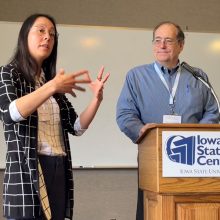 Better Late Than Never: Farmers, Ag Scientists and the Public Health Community Come Together in Iowa and Pay Tribute to a Sustainable Ag Pioneer
Better Late Than Never: Farmers, Ag Scientists and the Public Health Community Come Together in Iowa and Pay Tribute to a Sustainable Ag Pioneer
By: Audrey Tran Lam and Chuck Benbrook “I have been trying to bring together farmers and the public health community in Iowa for my whole career and tonight it finally happened.” This is what one attendee told the HHRA team at the end of our May 3, 2022 reception in Ames, Iowa. Our reception was a tribute to sustainable ag pioneer, Fred Kirschenmann. It was sponsored by HHRA, Practical Farmers of Iowa, and the Farming for Public Health program (FFPH) at the University of Northern Iowa. HHRA Board member, Audrey Tran Lam, manages the FFPH and helped organize HHRA’s participation in the 2022 annual Public Health Conference of Iowa (PHCI). The epicenter of herbicide-intensive weed management in the Heartland seemed the right place to debut HHRA science, and the beginning of the herbicide spray season a fitting time to do so. The pictures accompanying this blog capture the meeting’s good energy and fellowship. During the conference a steady flow of public-health practitioners stopped by the HHRA booth and engaged our dynamic duo, Grace Koch and Molly Funk, in dialogue about HHRA and the Heartland Study. Many of these public health professionals had either historic roots in farming, or were farmers themselves. The genuine interest in bringing a public health lens to agricultural practices in Iowa was inspiring. Interactions at our booth sparked discussions about farming, public health, climate change, soil health, environmental justice and more. We handed out HHRA and Heartland Study materials to public health professionals from all backgrounds and specialties. A bagful of certified organic mini-chocolate bars disappeared as fast as Grace and Molly could replenish the supply! Many people stopping by our booth shared personal stories about times they were sprayed with pesticides, or smelled that smell in the air, or wondered whether their water was safe to drink. Others told us about a family member (or members) or friends with cancer. One woman told us about a farm family she knew in which three members had been diagnosed with the same cancer over a two-year period. They lived on a farm with pesticides in the well water. At our booth, questions were raised almost non-stop about whether pesticides might be playing a role in some of the health problems that seem on the rise in Iowa. Exposures through drinking water came up over and over. As important as water is as a route of herbicide exposure, we were struck by the fact that very few people were aware that many Iowans, and most people in farm country, are breathing in air laced with a pinch of volatile herbicides on many days from mid-June through August, and have been doing so since 2017. During the HHRA and FFPH co-led concurrent session, the Iowa public-health community was understandably troubled upon hearing some of what we had to say, but many expressed gratitude that Iowa’s #1 industry had made it onto the agenda of their state’s annual meeting of public-health practitioners. For most of the ~400 people at the May 3-5 meeting, it was the first in-person professional meeting since Covid shut down travel and large gatherings. HHRA was the “Keynote Sponsor” for the meeting. It was a great investment that provided us the opportunity to introduce HHRA and the Heartland Study to conference attendees at the beginning of each day’s plenary session. On day one, Chuck Benbrook covered HHRA and HS basics and invited all attendees to our reception that evening — the tribute for Fred Kirschenmann. Chuck also pitched our substantive session Wednesday morning entitled “Iowa-Centric Public Health Challenges in the Wake of Rising Herbicide Use.” And – impressing his staff – he did so in just over his allotted three minutes! Audrey Tran Lam opened the plenary on day two with a deeper dive on why she was pleased to introduce her Iowa public-health colleagues to the Heartland Study and HHRA science, and why she hoped this would be the beginning of an information-rich and sustained conversation. A Special Tribute The highlight of the trip, though, was the reception and tribute for Fred Kirschenmann. Fred is well into his 80s and retired last year after nearly 25 years at Iowa State University. For many of those years, Fred was the Director of the once-world renown Leopold Center for Sustainable Agriculture at Iowa State University, where the conference was held. Despite the Leopold Center’s many valuable, practical, and appreciated contributions to farmers and farming in Iowa, the political powers-that-be in Iowa incrementally dismembered the Leopold Center, diverting and/or cutting funding and staff positions, ending programs and driving away faculty that wanted to work with the Center. Now, there is no Leopold Center and Iowa State University — and Iowa — is the lesser for it. Upon Fred’s retirement from ISU there was no celebration honoring his contributions to the institution, to the many students and faculty who worked on Leopold Center projects, and to people across the country and around the world who benefitted for a half-century from Fred’s unselfish sharing of knowledge and insight, connections and wisdom, all deep-rooted and time-tested. It was an honor for HHRA, PFI and the FPHP to host the tribute for Fred. Many of his friends and colleagues at ISU attended and took advantage of the opportunity to tell Fred how deeply his work and fellowship was valued and appreciated. In addition to the familiar faces at our reception, there was an impressive turnout from national and local public and environmental health officials interested in learning more about the mark Fred left on sustainable agricultural practices, as well as the many ways in which farming impacts the health of the communities they serve. Fred’s message at the close of his remarks was classic Fred. There is still much work to do and the only way to tackle it is through new connections, cooperation, and community. Three words that sum up a life’s work well done and also capture, succinctly, why we traveled to Iowa.
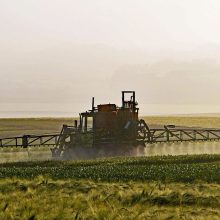 Extracting New Insights from Old Data on a Pressing Concern — The Rapid Rise in Reliance on 2,4-D Herbicide in the Heartland
Extracting New Insights from Old Data on a Pressing Concern — The Rapid Rise in Reliance on 2,4-D Herbicide in the Heartland
By: Marlaina Freisthler* Leveraging existing research is central to HHRA’s strategy to accelerate progress in answering contemporary questions about the health impacts of pesticide exposures. One of HHRA’s goals is to draw on existing datasets to glean new insights into pesticide exposure levels, trends, and health impacts. We use pesticide levels in human urine, known as biomarkers, as our primary method of estimating exposure. As a doctoral student in Environmental Health at George Washington University, I have had the opportunity to work with a team of distinguished researchers to publish a paper in Environmental Health reporting new insights from one such effort to use existing datasets to answer new questions. We report clear associations between trends in the use of the herbicide 2,4-D since 2001 and the frequency of exposures to 2,4-D over time and across the U.S. population. I receive generous doctoral funding sponsored by HHRA to support my research on herbicide exposures and their health impacts, including the costs to publish my research. In our research leading to this new publication, our team studied the percent of the population with detectable levels of 2,4-D in their urine across 6 cycles of the National Health and Nutrition Examination Survey. NHANES is a large and valuable public dataset providing information about the health and environmental exposures experienced by a representative sample of Americans. We were able to evaluate data on 14,395 people with available 2,4-D exposure biomarker levels who participated in NHANES between 2001 and 2014. Our core question was simple and important: Do trends in 2,4-D herbicide use impact trends in 2,4-D exposure levels? To conduct our analysis, we extracted data on 2,4-D herbicide use from HHRA’s Pesticide Use Data System (PUDS). All data in PUDS come from annual pesticide use surveys conducted by the U.S. Department of Agriculture. By combining 2,4-D exposure data from NHANES with 2,4-D use data from PUDS, we found: Around 33% of the people in NHANES had detectable levels of 2,4-D in their urine. The frequency of human exposures to 2,4-D rose from around 17% in 2001-2002 to almost 40% at the peak in 2011-2012. Increasing agricultural use of 2,4-D was clearly associated with increasing odds of detecting of 2,4-D in people’s urine. The odds for increasing exposure detections were more than twice as high for children aged 6-11 compared to adults; The odds for increasing exposure detections were also twice as high for women of childbearing age as for men in the same age group. We are particularly concerned by the last two findings noted above. Some physical and neurological processes that are still developing in fetuses, infants, and young children are far more susceptible to harmful impacts from chemical exposures. This means that women of childbearing age and young children are vulnerable segments of the U.S. population when exposed to chemicals like 2,4-D. This is especially important because NHANES includes only a small number of pregnant women and has not been used to sample children under age 6 for 2,4-D biomarkers, though infants and toddlers often demonstrate even higher levels of exposure to some chemicals than older children. We want to know why women and children are having these more extreme increases in detections of exposure to 2,4-D, in the hope that answers will lead to actionable steps to reduce exposures to these most vulnerable segments of the population. Answering our core question is particularly important now, as use of 2,4-D and other herbicides rises sharply across the country, and especially in the Midwest. This is why our scientists are measuring 2,4-D exposure as part of HHRA’s flagship project, The Heartland Study. Projections indicate that around two-thirds of the soybean seed sold to farmers in the next few years will be genetically engineered to tolerate both 2,4-D and glyphosate (i.e., Roundup). We expect that reliance on these types of “next-generation” seeds engineered to have multiple herbicide tolerances will continue the sharp increases in use of 2,4-D and other herbicides. In fact, HHRA projects that by 2030, 2,4-D use in the Heartland will exceed glyphosate use, as shown in the dynamic data visualization below. Our study results indicate that with these increasing uses of 2,4-D, there could very likely be increased population exposures, which our research team is continuing to study. Other ongoing HHRA-funded research projects are exploring the changes in other herbicide exposure levels over time in Midwestern women and the impacts of herbicide exposures on birth outcomes and children’s development. Below you will find the George Washington University press release announcing publication of our study, a link to access the paper, and the dynamic graphic showing expected increases in 2,4-D use through 2030. *Marlaina Freisthler is a PhD student and researcher at the George Washington University. Her graduate fellowship is supported by HHRA. Resources Freisthler, Marlaina S., Robbins, C. Rebecca, Benbrook, Charles M., Young, Heather A., Haas, David M., Winchester, Paul D., & Perry, Melissa J.; “Association between increasing agricultural use of 2,4-D and population biomarkers of exposure: findings from the National Health and Nutrition Examination Survey, 2001–2014;” Environmental Health, 2022, 21(1); DOI: 10.1186/s12940-021-00815-x. George Washington University press release Dynamic data visualization on 2,4-D projections 2,4-D papers in HHRA’s bibliography Media coverage on the paper: The Hill, February 10, 2022, “One in three Americans exposed to toxic weedkiller: study” The Guardian, February 10, 2022, “One in three Americans have detectable levels of toxic weedkiller, study finds” Tyler Morning Telegraph, February 10, 2022, “1 in 3 People Now Exposed to a Harmful Pesticide”
 Europe is Growing Organic Production, Will the US Follow Suit?
Europe is Growing Organic Production, Will the US Follow Suit?
Advocates calling for change in US Ag Inc often struggle to point to successful models through which farming and food chains have evolved toward safer and more sustainable production systems. The surest way to largely eliminate the impacts of prenatal pesticide exposure on birth outcomes and children’s development – HHRA’s foundational goals – is converting US farmland to organic production. We are often asked how such change can come about. Convincing answers to this key and important question are few and far between in the US, but some key lessons are emerging from efforts in Europe to expand organic farming and food supply chains. The Cilento organic food bio-district in Italy was established in 2009 and is thought to be the first-ever in the world. Overcoming challenges faced by organic farmers in marketing their produce was a primary driver. Municipal actions expanded demand for organic food and ingredients via public food-purchasing programs. The lure of scenic rural landscapes and strong support from the agrotourism industry for organic food and farming created new market demand. Today, organic farming is thriving in the Cilento district, profit margins have expanded, and enhanced soil health is supporting higher yields at lower costs on many farms. An action by a city council led to the formation of the Södertälje organic food system in east-central Sweden, some 35 kilometers from Stockholm. The goal was to expand the supply of organic products for public food-procurement programs as a way to advance health and environmental quality. The municipality’s Diet Union developed new food products and recipes in the context of a “Diet for a clean Baltic” to promote health and reduce food waste. Restaurants and cafeterias began using smaller plates to cut down on waste, an intervention that has proven to be surprisingly effective. In south-eastern France the mad cow disease outbreak across Europe was the trigger of action leading to the Mouans-Sartoux organic food system. The initial focus was on supplying organic beef to school canteens, coupled with municipal government support for regional sustainable farm research and food education programs. A multi-faceted effort to provide organic food to children led to greater awareness of the diversity of benefits arising from organic farming. New efforts emerged to reach other vulnerable segments of the population with organic food (e.g. the elderly, pregnant women). These three region-based organic food systems in Europe are case studies in a just-published paper by Lilliana Stefanovic (2020), a scientist in the Department of Organic Food Quality and Food Culture at the University of Kessel in Germany. Imagine that. An academic department focused on organic food quality and culture. How long might it take for such a department to take hold at Iowa State University, in the heart of American farm country? The Stefanovic paper addresses how local organic food systems in Europe can contribute in achieving the Sustainable Development Goals (SDG) set forth by the United Nations, and especially SDG 12, “responsible consumption and production.” Her analysis concludes that local and place-based organic food and farming districts can make important contributions in transforming food and farming systems to promote human and animal health, and soil health and environmental quality. Two drivers played key roles in all three case studies: relatively short distances to population centers, and significant support for organic supply chains from public food-procurement programs, and especially those feeding children. And just a few months ago, the Italian government pledged to invest 3 billion euros (about $3 billion US) to convert at least 25% of the country’s farmland to organic systems by 2027. The funds will come from Common Agricultural Policy payments supported in part by a tax on pesticide sales. There are about 16.6 million acres of arable land in Italy. Reaching the 25% organic goal would entail the transition of around 2 million more acres to organic, given that a little over 15% of Italian farmland is already managed organically. If $3 billion in transition payments were spread over 2 million acres, average payments would be around $1,500 per acre. A multi-pronged effort in Italy is planned to simultaneously grow the supply of organic foods and demand for them. Investments will be made in the infrastructure needed to support profitable regional organic food supply chains, while increasing the supply of value-added, premium foods for sale throughout Italy, Europe, and for a few commodities (especially olive oil), the world. Such bold pledges and audacious goals have come and gone in many countries with little concrete and sustained change to show for the resources invested. But perhaps the time is right in Italy for acceleration in the transition to organic farming in light of the many scientific studies showing that organic farming can both slow global warming and render farms more resilient in the face of drought and flooding. What about here in the USA? The USDA has recently pledged to invest $300 million in a new Organic Transition Initiative. This program will provide new funding via many USDA-program channels to encourage the transition of farms to organic production. While a major increase in USDA funding dedicated to expanding organic production, $300 million over several years is a small share of the approximate $20 billion in annual federal spending on farm commodity and crop insurance programs. It is also instructive to compare the $3 billion investment in Italy to reach their goal of 25% of farmland in organic by 2027 to the $300 million investment just announced by USDA. The Italian program, if it actually happens, would provide about $1,500 per acre transitioned to organic. The USDA’s investment of $300 million translates into about $4.30 per acre across the approximate 70 million newly transitioned acres necessary for 25% of the US cropland base to be managed organically. Current disparity in public support for and investment in the transition to organic farming in the US versus Europe arises from vastly different public awareness of the benefits likely to stem from the transition of more farmland to organic production. Many public and private institutions […]
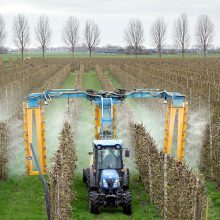 HHRA Files Comments in Support of Another Milestone in Quest to End OP Insecticide Use – Big Step for Farmworker-Environmental-Public Health Justice
HHRA Files Comments in Support of Another Milestone in Quest to End OP Insecticide Use – Big Step for Farmworker-Environmental-Public Health Justice
By Mark Lipson, HHRA’s Director of Policy and Regulatory Engagement September 25th marked the close of public comments on a historic petition to EPA calling for an end to organophosphate (OP) pesticide applications on food crops. Twelve groups led by the United Farm Workers Foundation and Earthjustice petitioned EPA last November with a compelling summation of the case for ending all remaining uses of OP poisons in the food system. From the 1980s through about 2000 both in the US and globally, organophosphate (OP) insecticides were the most heavily applied family of pesticides used to kill insects. For a half-century the OP chlorpyrifos was by far the most heavily used OP, but use ended in 2020 because of adverse impacts on the neural development of children. Several OPs remain in use today including acephate, diazinon, terbufos, dimethoate, and oxydemeton-methyl. HHRA submitted lengthy comments signed by three of its principals, Dr. Phil Landrigan, Dr. Kathleen Merrigan and HHRA Executive Director Dr. Charles Benbrook. Each of the signers has played important roles in the decades-long fight against the manifold harms caused by OP farm chemicals. Dr. Landrigan led the landmark National Academy of Sciences panel that wrote the 1993 NAS report Pesticides in the Diets of Infants and Children. The importance of that NAS study was summarized in a high-profile comment signed by dozens of prominent doctors and scientists in support of the UFW Petition: “In response to the NRC [of the NAS] 1993 pesticide report that documented the overwhelming scientific evidence on early life susceptibility to pesticides, Congress in 1996 unanimously passed the Food Quality Protection Act (FQPA) —the only federal environmental statute containing explicit provisions for the protection of children.” Yet 25 years later the promise of FQPA is not yet fully realized. The scientists’ letter continues: “In the quarter-century since the enactment of the FQPA, while OP uses have continued to increase at the expense of children whose brains were irreparably impaired, the scientific evidence of neurodevelopmental harm in children from real-world OP exposures has strengthened.” The neurotoxic and developmental harms of OPs fall hardest on farmworkers and their families. As the Petition succinctly states: “The farmworkers who grow our food face the highest exposures and risks from OP pesticides. In addition to exposures through food and drinking water, they are exposed when they apply the pesticides or enter fields that have been sprayed, and they and their families are more likely to be harmed by pesticide drift because they live and go to school near where OP pesticides are sprayed…The science, the law, and principles of environmental justice require EPA to ban OP uses that are unsafe and that harm workers and their families.” The Petition calls for four main actions by EPA impacting the human health assessments and regulation of OP insecticides: EPA must end its unreasonable delay and move expeditiously to protect people from the OPs. EPA must revoke tolerances and cancel registrations for food uses of OPs for which the EPA is unable to determine that there is a “reasonable certainty of no harm” stemming from current levels of OP dietary exposures. EPA must update its OP risk assessments to use a regulatory endpoint that will protect children from neurodevelopmental harm, as well as the impacts of coformulants (i.e. “inert ingredients”) on exposure levels and the toxicity of end-use products. EPA must cancel registrations allowing OP uses that pose significant risk of unreasonable adverse effects on applicators, farmworkers and other people exposed near recently treated fields. HHRA’s comments provide the authors’ perspectives on each of these four actions, and the imperative need for EPA to act on them all. In addition to highlighting the well-established neurodevelopmental risks following prenatal exposure to OPs, the HHRA comments synthesize data on the economic costs stemming from OP-driven loss of lifelong IQ. These harms far, far outweigh any remaining pest control benefits from continued use of these insecticides. HHRA’s submission also provides new data and synthesis on dietary risks. While US farmers have reduced OP dietary risks significantly, and many no longer need nor rely on OPs, OP residues and risk levels are rising in several key imported children’s foods, and could continue doing so until EPA revokes OP tolerances as called for in the petition. The HHRA comments demonstrate that there are ample alternatives for the OPs still in use. The comments laud the efforts of the last two decades to streamline registration for new, lower-risk pesticides and recommends even greater investment in biological pest controls. Finally, HHRA’s comments provide data and analysis to unequivocally support immediate and comprehensive cancellation action on the remaining OPs for the health of farmworkers and their families and people living, working, or going to school near OP-treated fields. Now that the public docket has closed, EPA has to decide what the science now shows and the law requires. But the petition’s comprehensive compilation of solid data shows OP risks exceeding the EPA’s “level of concern.” The petition and supporting comments from Landrigan, Merrigan, and Benbrook and many other scientists represents a watershed in the quest for a food system in which public health and worker safety are top-tier goals both in words and action.
 Glyphosate and AMPA in You and Me
Glyphosate and AMPA in You and Me
No one should be surprised that the Centers for Disease Control has found glyphosate in 80% of the urine samples tested as part of CDC’s routine NHANES biomonitoring program. Details are reported online in a June 2022 CDC report as well as in many news outlets including this story in The Guardian. Today, most Americans have multiple herbicides in their urine on any given day. The general public is exposed primarily via food and beverages because the EPA allows various herbicides, including those containing glyphosate, to be sprayed just a week or two prior to harvest on crops including wheat, oats, barley and edible beans. These applications virtually always result in sizable residues on the harvested grain or beans that enter food-supply chains. Those living in rural agricultural areas, such as the heartland states in the Midwest, may also be subject to environmental exposure from the millions of acres of genetically engineered corn and soybeans where glyphosate is extensively used. The urine samples that CDC tested were collected almost a decade ago. The analytical method the agency uses is highly sensitive in the case of glyphosate, but unfortunately does not detect glyphosate’s primary metabolic breakdown product, aminomethlyphosphonic acid, aka AMPA. This matters because several published studies have found statistically significant associations between AMPA levels in the urine of pregnant woman and adverse birth outcomes, but not with glyphosate, or less so in the case of glyphosate. What gives? All glyphosate-based herbicides (GBHs) contain glyphosate and two to four surfactants and other so-called “inert” ingredients. The key contributions of the surfactants in GBHs to herbicide efficacy and human-health risks have been covered in papers published by HHRA scientists and alliance partners: “Insight into the confusion over surfactant co-formulants in glyphosate-based herbicides” by Robin Mesnage, Chuck Benbrook, and Michael Antoniou. Published in Food and Chemical Toxicology in 2019. “Ignoring Adjuvant Toxicity Falsifies the Safety Profile of Commercial Pesticides” by Robin Mesnage and Michael Antoniou in Frontiers in Public Health, 2017 When glyphosate herbicide spray solution lands on a plant, the residue left on the plant starts out as almost all glyphosate. But glyphosate starts breaking down to AMPA within hours. Day in and day out, the glyphosate on these crops breaks down into AMPA. The percent of samples testing positive for glyphosate declines in step with the rising frequency of AMPA residues. In addition, the average level of the glyphosate residues that remain detectable steadily falls, and average levels of AMPA rise. Several months to a year or more pass between harvest and a consumer buying a food product containing an ingredient from grain or beans harvested from a field sprayed pre-harvest with a GBH. By then most of the glyphosate has broken down into AMPA. This is why residues of AMPA are often present in ready-to-eat processed foods at higher levels than glyphosate. It is also why AMPA levels are more likely than glyphosate to be associated with adverse health effects in epidemiological studies where diet is the primary route of exposure. Testing for Glyphosate and AMPA in the Heartland Study HHRA chose The Centre de Toxicologie du Québec (CTQ) to quantify glyphosate levels in urine samples because this cutting-edge laboratory has developed a method that quantifies both glyphosate and AMPA levels. In addition, the CTQ method detects glufosinate and its principal metabolite 3-MPPA. The herbicide glufosinate is known to cause developmental problems in animal studies (Laugeray et al., 2014) and is the active ingredient in Liberty herbicides. Use of these glufosinate herbicides is now steadily rising, especially in the Heartland. Soon HHRA will be publishing some of our herbicides-in-urine biomonitoring data. The “news” is not good. Most pregnant women in the Midwest are exposed to four herbicide analytes on a near-daily basis, and six or more on some days. Levels of herbicides known to trigger reproductive and developmental problems are rising in the urine of many people (e.g. 2,4-D and dicamba). Our Heartland Study was designed and is being carried out to determine whether rising exposures to multiple herbicides are causing more frequent or more serious adverse birth outcomes. We sincerely hope the answer is “no” on both accounts, but our team feels a sense of urgency in accelerating mother-infant pair enrollments in the HS. The faster we reach our 2,000 mother-infant pair goal for HS enrollments, the sooner we can gage the need for changes in herbicide use patterns and weed management systems.
 Big Changes Called for to Sever the Roots of Injustice in the Distribution of Pesticide Risks and Benefits
Big Changes Called for to Sever the Roots of Injustice in the Distribution of Pesticide Risks and Benefits
Have you heard: A new study has reported that one-half of the residents in high-density, low-income public housing in New York State apply pesticides inside their apartments at least once per week? No wonder then that 85% of pregnant African American and Dominican women in NYC had at least one pesticide in their umbilical cord blood samples at delivery, or that 8 or more pesticides were found in the air in 30% of the apartments in which young children lived. Or that farmworkers in Monterey County in California had median levels of some types of pesticides in their urine 385-times higher than the rest of the US population. The most highly exposed group of people in general is farmworkers, but for the 83% of farmworkers that identify as Hispanic and Latinx the risks are often even higher. These are among the statistics and study results reported in a provocative, challenging paper just published in BMC Public Health entitled “Pesticides and environmental justice in the USA: root causes, current regulatory reinforcement and a path forward” (Donley et al., 2022). Provocative because the paper backs up hard-edged statements with solid evidence like the facts cited above. Challenging because it makes a strong case for the big changes needed to reduce pesticide exposures and risks that disproportionally impact Black, Indigenous and People of Color (BIPOC). The authors also inject some realism into their analysis by acknowledging the many reasons why needed changes are likely out of reach. The paper calls for many changes in pesticide regulatory law and policy to begin to dismantle the legal and institutional factors and forces that perpetuate today’s inequitable distribution of human-health “costs” stemming from reliance on pesticides. The authors conclude: “The root causes of these disparities involve hundreds of years of systemic oppression kept in place through structural racism and classism in the USA.” One recommended set of policy actions highlighted in the paper would aspire to remove what the authors label a “pesticide safety double standard.” This double standard arises from the fact that Congress has directed the EPA to apply a stricter standard in efforts to cap pesticide dietary exposures/ risks facing the general public, compared to the standard applicable to exposures/risks facing farmworkers and others who use pesticides at work, The authors write: “The second thing EPA should do under its current authority is to finally, and formally, define ‘no unreasonable adverse effects’ in a way that appropriately recognizes and reduces harm to agricultural workers.” But unfortunately, Congress has already set forth a definition of “unreasonable adverse effects” in the Federal Insecticide, Fungicide, and Rodenticide Act (FIFRA) that leaves essentially no room for EPA to address farmworker and applicator risks via the tolerance setting process: “(bb) UNREASONABLE ADVERSE EFFECTS ON THE ENVIRONMENT.—The term ‘unreasonable adverse effects on the environment’ means…(2) a human dietary risk from residues that result from a use of a pesticide in or on any food inconsistent with the standard under section 408 of the Federal Food, Drug, and Cosmetic Act (21 U.S.C. 346a).” Via this definition, FIFRA directs the EPA to focus on average risks to the general public from pesticide residues in food. This is one of many reasons why the EPA will need help from Congress in removing the double standard embedded in how EPA assesses pesticide risks facing the general public versus more heavily exposed people, the majority of which are members of BIPOC communities. In a published paper released in August 2021, HHRA has offered its own set of recommendations to enhance the scientific rigor and independence of pesticide risk assessments. Like many of the changes identified in the Donley et al. paper, the changes HHRA has called for will also require fundamental changes in the FIFRA statute. In other words, just one more complex, contentious task on the long list awaiting the attention of the US Congress.
 Recommended Reading: “This Might Hurt Some Feelings” by Dr. Christopher Jones
Recommended Reading: “This Might Hurt Some Feelings” by Dr. Christopher Jones
“Shouldn’t we be asking agriculture to perform at some baseline level of environmental performance before brainstorming yet another unaccountable way to funnel your money to them for uncertain outcomes? … The public has been asked to invest over and over and over again in this production system; isn’t it about time we had a say in how it is operated?” Author of such provocative blogs as “Take This Stream and Shove It” and “Fifty Shades of Brown,” University of Iowa Research Engineer Dr. Christopher Jones recently addressed the ever-present question of water quality solutions in corn belt agricultural areas. Attempting to answer “what can be done,” Dr. Jones turns the spotlight on the existing ag production system and the small shifts that can make large, healthful impacts. “With a strong background in contaminant hydrology and nutrient & sediment transport, Dr. Christopher Jones’s work and research interests lie at the intersection of agriculture and water quality. He has worked in Iowa for over 19 years on remedying the state’s water-quality problems, and is known and admired for his clean-water advocacy. This piece, featuring Dr. Jones’s trademark tell-it-like-it-is tone, delves into the perennial problem of nitrogen contamination in Iowa’s waterways and features several thought-provoking solutions.” -Audrey Tran Lam, MPH University of Iowa, Farming for Public Health; HHRA Board Member Read Dr. Jones’ blog here.
A Note From Our Executive Director
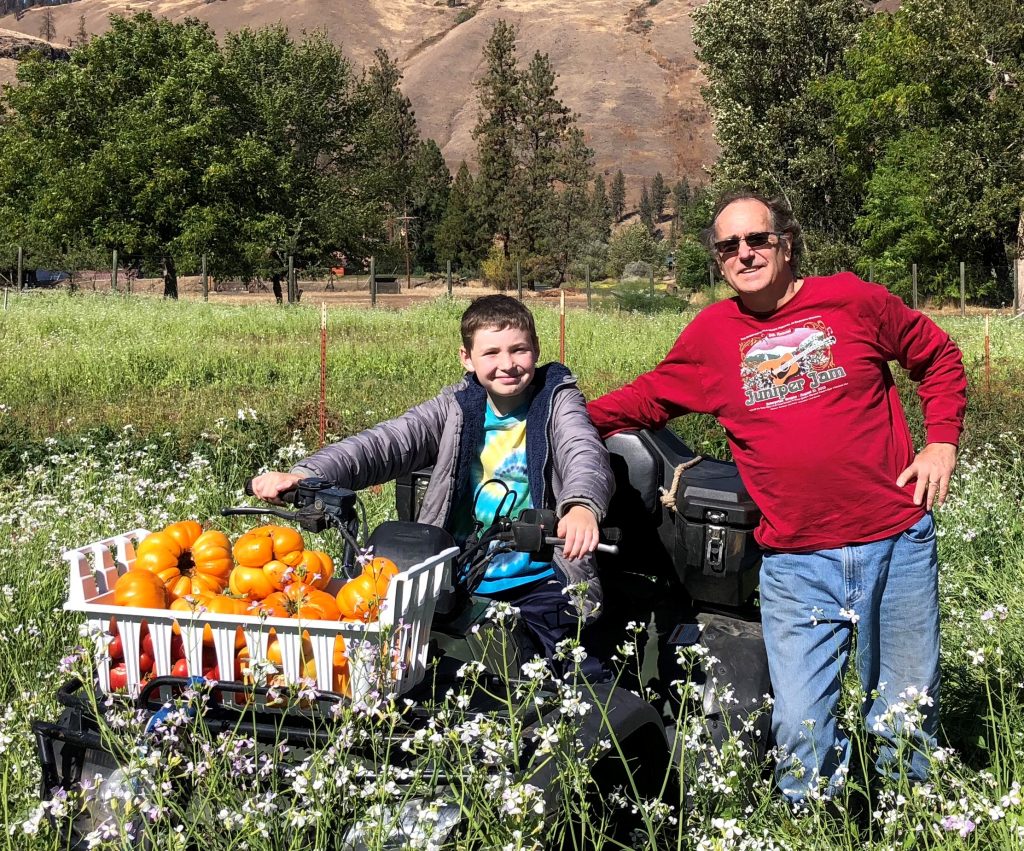
Welcome to the Heartland Health Reliance Alliance (HHRA).
This NGO was started by the scientists and clinicians who designed, and are carrying out The Heartland Study (HS). The Heartland Study is a complex, large-scale, long-term public health research project. Its primary goal is to determine whether the substantial increase in use of herbicides since around 2015 in the Midwest is causing an increase in the frequency or severity of adverse birth outcomes across the Heartland.
Please explore HHRA’s new website to learn about these issues and track the progression of our science.
The mission of the HHRA is unique, as is its flagship project, The Heartland Study. No such project of its scope has ever been undertaken on public health issues arising from agricultural production systems without substantial, multi-year funding from the federal government. But in recent years, federal funding has been cut for several highly successful, long-term studies on children’s health. There seemed virtually no chance government funding would be available for a new and unusual project like The Heartland Study.
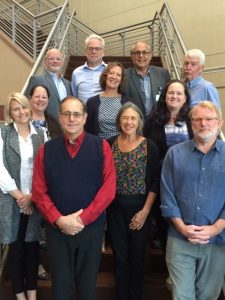
And so our team pursued new ways to organize, manage, and fund the HS. We knew funding would have to be cobbled together from many sources, public and private. We wanted to keep overhead expenses as low as possible, so most of the funds raised would support new science. We also recognized the success of The Heartland Study rested on the ability of the science team to stay focused on the science, and the complicated, sensitive public health challenges we have chosen to take on.
Our team also recognized early on that our core mission would require novel integration of scientific tools, methods, and investigative models from several fields. We knew we would need a large and strong team of collaborators, each with deep experience. This is essential for our scientific work to benefit from their experience, their labs and equipment, colleagues and students, as well as sophisticated clinical research-support infrastructure.
It was crystal clear we would never raise enough money to create all these research skills and capability from fresh ground and new seed, nor would we ever have enough funding to forge traditional, funding-driven partnerships among universities and research hospitals.
Our team found success through building trust, openness in sharing ideas and then finding better ones, and through the democratic sharing of responsibility and ownership. We came to realize The Heartland Study would succeed only if our team of committed scientists and clinicians remained in control. This meant that no one funder, administrator, university, or hospital partner could emerge as the primary fiscal agent and “leader” of the project.
We had to create, and then retain open, collaborative decision processes on everything from research priorities and methods, recruitment of new partners and staff, and securing and managing funds. Why? Because the only reason a scientist, doctor, or clinical center joins The Heartland Study is because they too are concerned and care about the issues we are trying to shed new light upon. Because they want to help find answers.
Without a “mothership” to vest management and fiscal agent responsibilities upon, we had to invent an alternative. This led to the creation of the Heartland Health Research Alliance, the Heartland Study’s new governing body and principle funder.
The word “Alliance” is central to what HHRA is about. Our success depends on our ability to live up to the core meaning of the word.
HHRA is focused now on managing and funding the Heartland Study, and related research initiatives in the U.S. and abroad. We are beginning to support graduate education in public health, with a focus on the food and agricultural sectors, and that which sustains us all, our daily bread.
HHRA leaders and scientists share the view that the scope of scientific and technological change in food and farming over the last one-half century has outpaced the ability of physicians and the public health community to recognize and mitigate the impacts of the chemicals and animal drugs now relied on so heavily in farming and food manufacturing.
We hope the HHRA, and this new way to conduct and fund public health science, will help return public health science to its core mission — preventing harm to public health before it happens.
-Dr. Charles Benbrook, HHRA Executive Director
